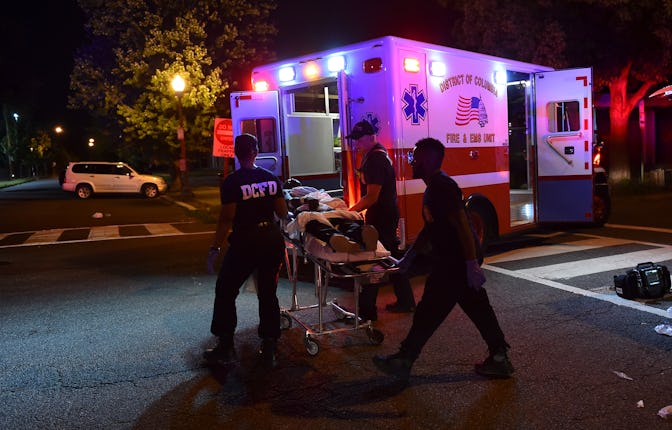There are new opioids to worry about. And they're several times stronger than fentanyl.
Experts worry that overdose reversal medication won't work on them.

Opioid overdose deaths have recently hit tragic highs in the U.S. A staggering 75,673 Americans died of opioids overdoses during the 12-month period ending this April, compared to 56,064 the year before, according to CDC estimates. Experts point to synthetic opioid fentanyl as a major culprit behind overdoses in the U.S. due to its potency — up to 50 times higher than that of heroin, per the CDC. Now, forensic scientists have identified opioids even stronger than fentanyl on used syringes in Washington, D.C., the Washington Post reported.
The D.C. Department of Forensic Sciences discovered the opioid protonitazene in September, per the Post, followed by another opioid called isotonitazene in October. Protonitazene is three or four times more potent than fentanyl, while isonitazene is around 10 times more potent, Alex Krotulski, associate director at the Center for Forensic Science Research and Education, told the Post.
These opioids fall under a class of substances called nitazenes, which Evans said have also been found on the Eastern Seaboard, the Midwest, as well as the South and Southwest. While they don’t seem to be displacing fentanyl, he noted that even if the US restricts its fentanyl supply, nitazenes or other opioids could very well fill the void.
For now, though, fentanyl still poses the greatest danger to opioid users in D.C., the Post explained, and nitazenes don’t appear to be widespread. They still warrant concern, though, because overdose prevention tools might not work on them. It’s unclear whether fentanyl testing strips that warn users if their drugs are highly potent can detect nitazenes, for example. People who overdose on nitazenes may also need additional doses of naloxone, a.k.a, Narcan, the medication that reverses opioid overdoses, Evans said.
Despite federal grant money and a plan laid out by Mayor Muriel E. Bowser years ago to tackle D.C.’s drug epidemic, the problem hasn’t received nearly enough attention, D.C. Council member Charles Allen told the Post — possibly because most of the victims are older Black men in low-income neighborhoods on the east side. Indeed, studies have shown that Black and Latinx communities have seen the highest increases in overdose deaths in recent years.
Meanwhile, heightened stress and reduced access to recovery services during the pandemic have only worsened the nationwide opioid epidemic. As this crisis metastasizes, churning out new substances to worry out, we’re reminded yet again of its deeply systemic, complex nature — and the need to throw everything we can at it.